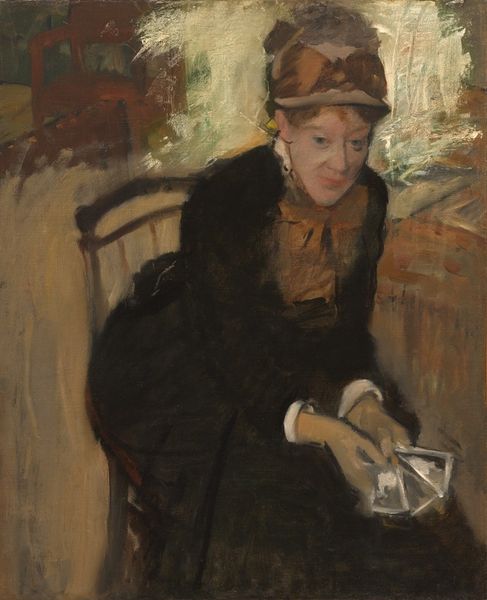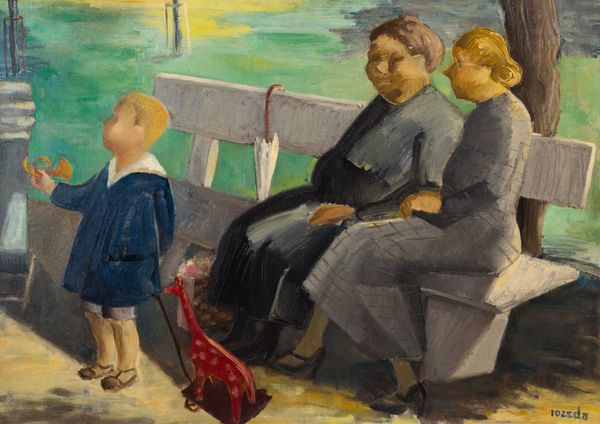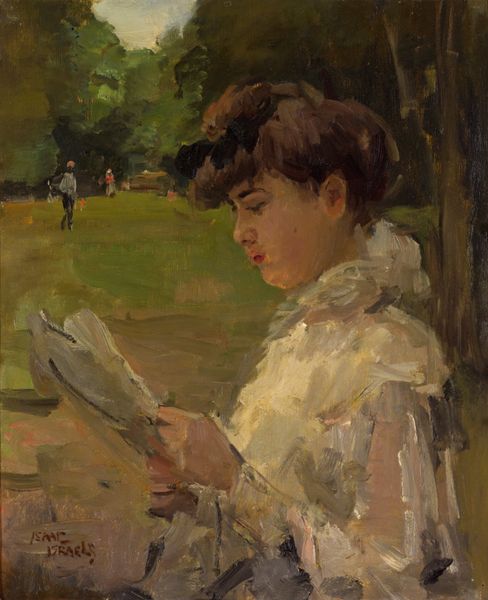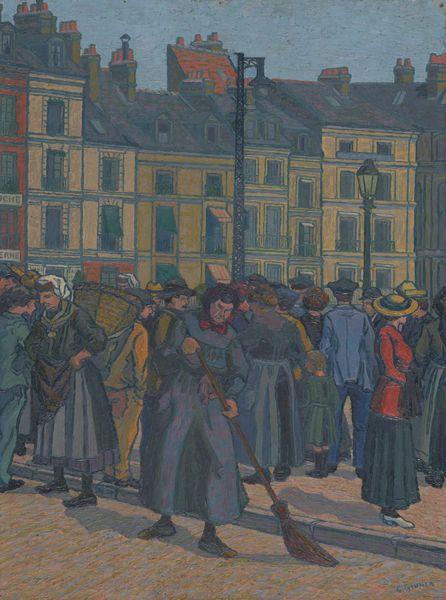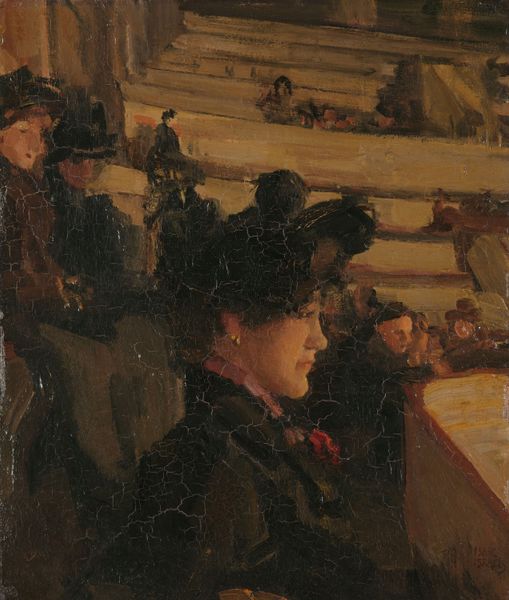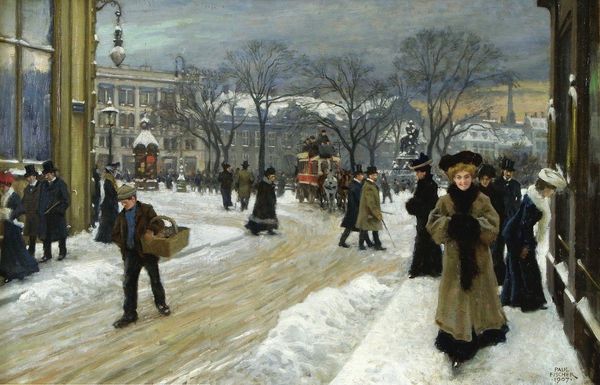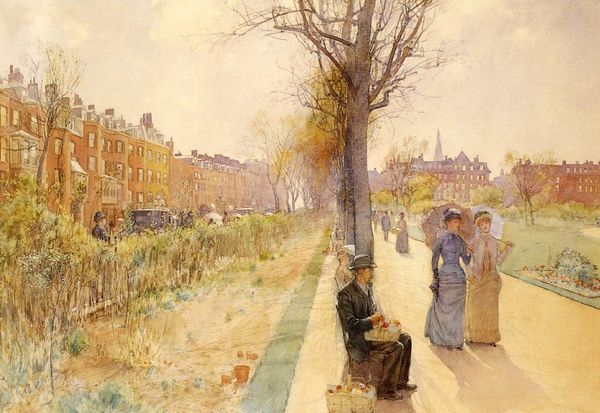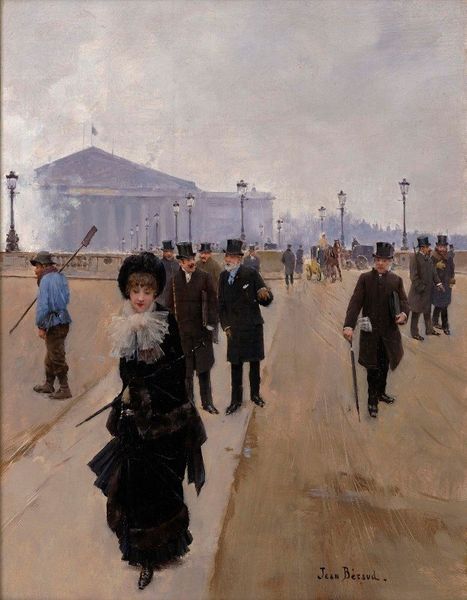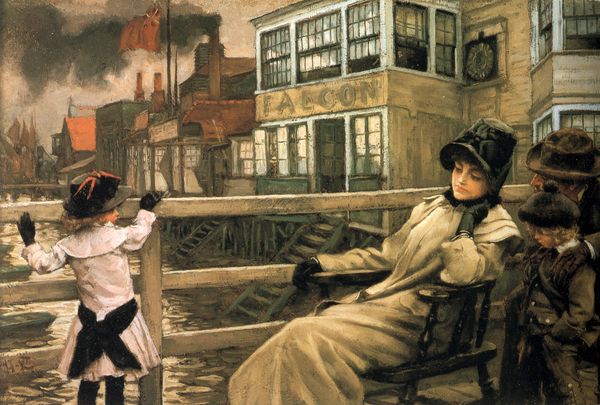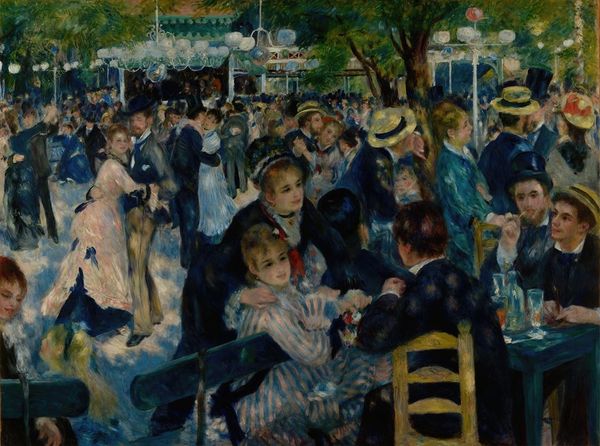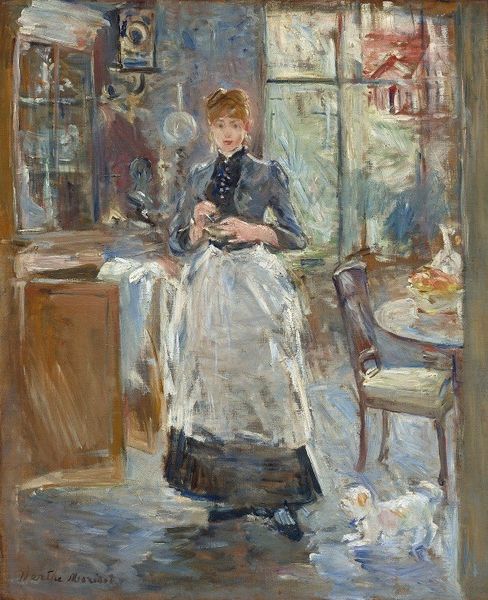
Dimensions: 86 cm (height) x 98 cm (width) (Netto)
Curator: Here we have Peter Hansen’s 1910 oil painting, "Spring. Young Girl with a Pram," housed at the SMK, the National Gallery of Denmark. What’s your immediate take? Editor: It’s subdued. The palette is so muted, almost like a faded photograph. Despite the title, "Spring," there’s a melancholy feel, particularly in the young woman's expression. Curator: Hansen was a part of the Funen Painters, a group who often depicted everyday life. This scene encapsulates a moment of early 20th-century urban life and shifts in women's roles. The park as a shared public space becomes interesting in thinking about who has access to that space, no? Editor: Exactly, and consider the materiality. The painting isn't about grand pronouncements but about the texture of daily life rendered in oil paint. Look at the way he uses strokes to create the fur on the pram. I wonder where he sourced his paint—was it commercially produced, and how might that affect the final artwork? Curator: It's also fascinating to think about what this image meant to its contemporary audience. Early modernism presented new perspectives on traditional themes. A painting depicting childcare in an increasingly urbanized world speaks to anxieties and aspirations surrounding women. Editor: Right. It invites a broader conversation on the labor of care that is subtly visualized, I find this subject also reveals the tension of gender roles being expressed in this time period, not a monumental history narrative, but something more immediate, something quieter, less grand and arguably much more profound. Curator: The contrast between the children playing and the young woman’s serious demeanor further underscores the complexity of her position within this "spring" scene. The city forms the background in the picture, highlighting the position of the park at this time. Editor: The city limits, both physically and emotionally, become more pronounced in the image—making her pose even more poignant. It’s about everyday realities transformed by material into something… lasting. Curator: Ultimately, I believe it makes a case for art history's crucial ability to document change by capturing cultural evolution and progress from past generations and through imagery that invites contemplation on historical context. Editor: Yes, precisely—it is what you see, it is also how it was crafted, what materials were chosen, and, more importantly, what that says about how these themes still resound with the society around the viewer and, frankly, humanity, today.
Comments
No comments
Be the first to comment and join the conversation on the ultimate creative platform.
